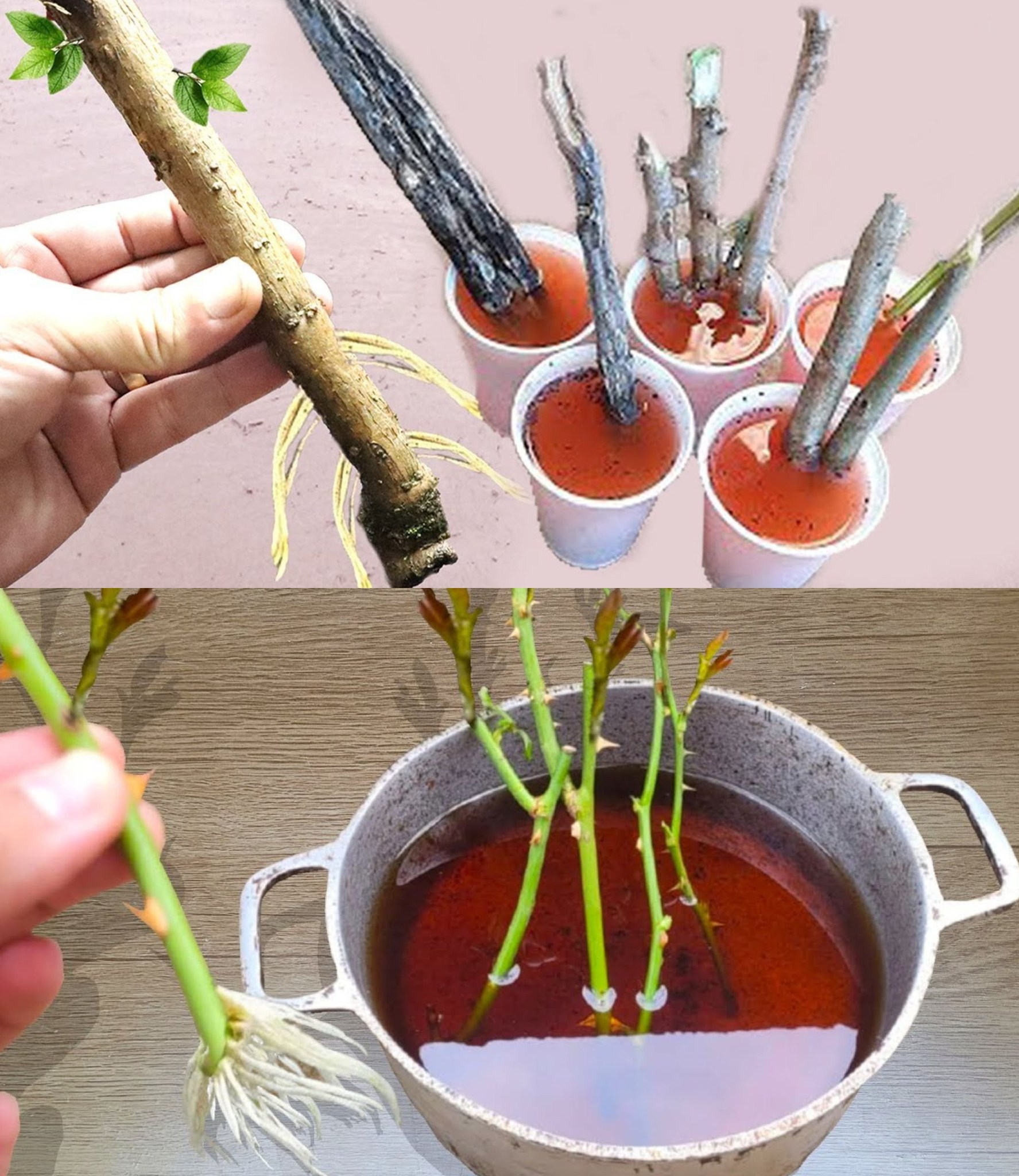
Best Technique to Create Roots on Any Branch (Without Spending Anything)🌱
Propagating plants by creating roots on branches is a fantastic way to expand your garden without spending a dime. One of the most effective and straightforward methods is air layering. This technique encourages a branch to develop roots while still attached to the parent plant. Here’s how you can do it using materials you probably already have at home.
What is Air Layering?🌱
Air layering is a propagation method that involves stimulating a branch to produce roots while it remains on the parent plant. Once the roots are well-established, the branch can be cut and planted as a new, independent plant.
Materials Needed🌱
- A healthy plant branch
- Sharp knife or pruning shears
- A small piece of plastic wrap or a plastic bag
- String or twist ties
- A handful of sphagnum moss or soil (if available)
- Water
- Optional: rooting hormone (if available)
Step-by-Step Guide to Air Layering🌱
- Select the Branch:
- Choose a healthy, semi-hardwood branch that is about the thickness of a pencil. It should be free of disease and pests.
- Make a Cut:
- About 12-18 inches from the tip of the branch, make a 1-inch cut around the circumference. Remove the ring of bark down to the inner wood. This exposed area is where the roots will develop.
- Apply Rooting Medium:
- If you have rooting hormone, apply it to the exposed wood to encourage root growth. While not necessary, it can speed up the process.
- If you have sphagnum moss, soak it in water until it’s thoroughly wet, then squeeze out excess water. Pack the wet moss around the exposed area. If you don’t have moss, you can use a small amount of soil.
- Wrap the Cut:
- Cover the moss or soil with a piece of plastic wrap or a plastic bag. Secure the top and bottom with string or twist ties to hold everything in place. Ensure the wrap is tight enough to hold the moisture but not so tight that it restricts growth.
- Maintain Moisture:
- Check the wrapped area regularly to ensure it stays moist. If it dries out, carefully unwrap it and moisten the moss or soil again.
- Wait for Roots:
- Depending on the plant species and environmental conditions, it may take a few weeks to a couple of months for roots to develop. You can check for root growth by gently squeezing the wrapped area. If it feels firm, roots are likely forming.
- Transplanting:
- Once you see a healthy mass of roots through the plastic, cut the branch just below the root ball. Carefully remove the plastic wrap and plant the rooted section into a pot with well-draining soil or directly into the ground.
Tips for Success🌱
- Timing: Air layering works best during the plant’s active growing season, typically spring or early summer.
- Humidity: High humidity levels help in root formation. Ensure the moss or soil remains consistently moist.
- Patience: Rooting can take time. Be patient and resist the urge to check too frequently, which can disturb the developing roots.
Benefits of Air Layering🌱
- Cost-Effective: Requires minimal materials, most of which you already have.
- High Success Rate: Because the branch remains attached to the parent plant, it continues to receive nutrients, leading to a higher success rate.
- Versatile: Can be used on a wide variety of plants, including fruit trees, shrubs, and ornamental plants.
By using this simple air layering technique, you can create roots on any branch without spending anything. It’s an easy, effective way to propagate your favorite plants and expand your garden. Happy gardening!
